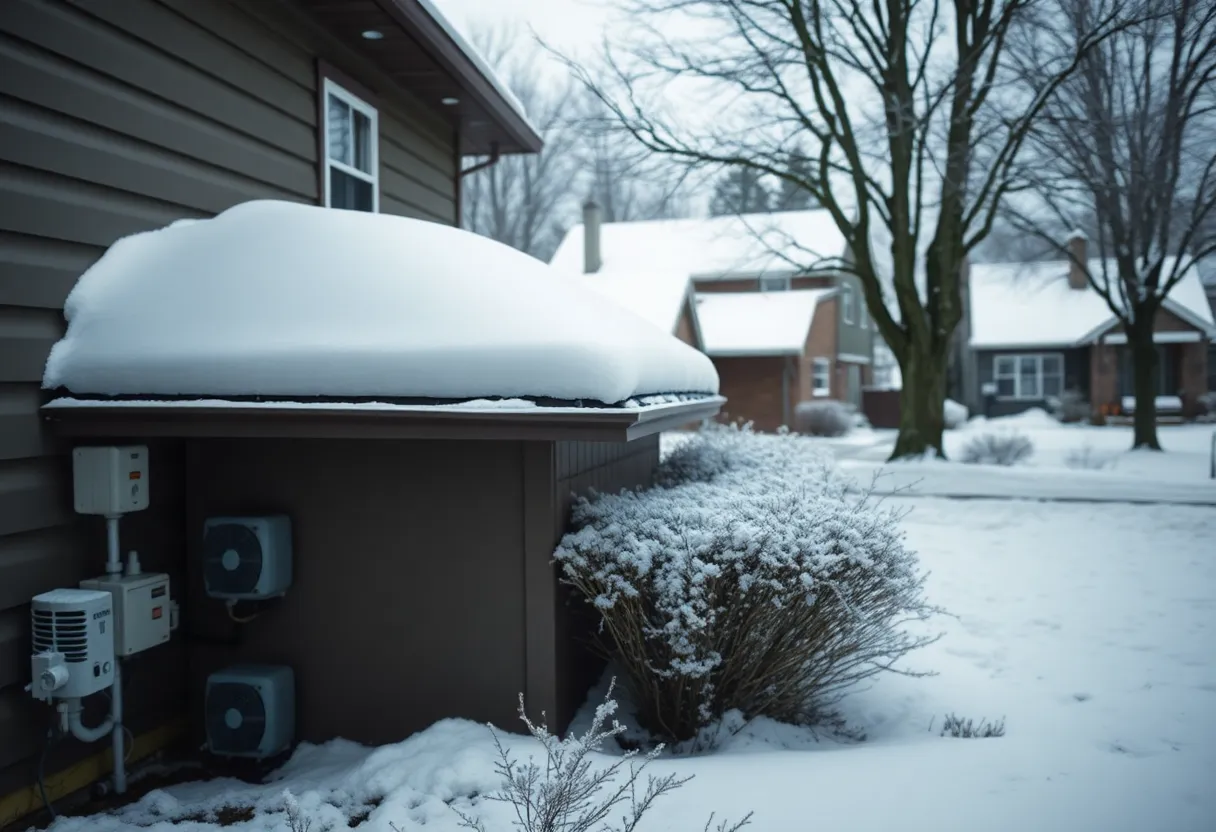Buffalo, NY, October 14, 2025
Buffalo residents are bracing for a challenging winter as heating costs are projected to rise by 10-15%, driven by escalating natural gas prices. These increases are attributed to ongoing supply chain issues affecting fuel availability. Households may find their heating bills increase by $100 to $200 per winter, prompting local experts to advise on energy-saving measures. Vulnerable populations can access assistance programs to mitigate these financial strains. As awareness grows about energy efficiency, families are encouraged to adopt sustainable practices amidst these economic pressures.
Buffalo, NY – Rising Heating Costs Greet Winter Season
Buffalo residents are preparing for a colder and more expensive winter as heating costs are expected to climb by 10-15% this season, based on projections from utility provider National Grid. This increase stems from higher natural gas prices driven by ongoing supply chain challenges. With the first signs of frost already appearing in Western New York, local households are urged to take proactive steps to manage their energy bills during the approaching chilly months.
Understanding the Cost Surge
The anticipated rise in heating expenses will affect many in Buffalo, where natural gas serves as the primary fuel for home heating. Supply chain factors, including global energy market fluctuations and logistical disruptions, have pushed natural gas prices upward. This comes at a time when colder temperatures typically drive up usage, putting additional pressure on family budgets. For an average household using natural gas, this could translate to an extra $100 to $200 over the winter period, depending on home size and insulation quality.
National Grid’s forecast highlights that these elevated costs are part of a broader trend affecting utility rates across the region. While electricity and other heating sources may see varying impacts, natural gas users will feel the brunt due to its widespread use in older Buffalo homes equipped with furnaces and boilers.
Practical Tips for Energy Savings
To help offset the financial hit, simple energy efficiency measures can make a noticeable difference. Sealing drafts around windows, doors, and other openings prevents warm air from escaping and cold air from entering, reducing the workload on heating systems. Programmable thermostats offer another effective solution by automatically adjusting temperatures—lowering them when homes are unoccupied or during sleeping hours, potentially saving up to 10% on annual heating costs.
Additional recommendations include regular maintenance of heating equipment, such as cleaning or replacing furnace filters monthly, to ensure optimal performance. Insulating attics and walls, where feasible, provides long-term benefits by retaining heat more effectively. These steps not only cut down on bills but also contribute to a smaller environmental footprint amid growing concerns over energy consumption.
Support Options for Vulnerable Households
For low-income households, relief is available through local assistance programs designed to ease the burden of rising energy costs. These initiatives provide financial aid for heating bills, emergency repairs, and weatherization efforts. Organizations in Buffalo facilitate applications for state and federal programs, ensuring that eligible families receive support before the deepest freeze sets in. Residents are encouraged to contact utility providers or community services early to explore these options and avoid service disruptions.
Broader Context in Western New York
Buffalo’s harsh winters have long tested the resilience of its residents, with lake-effect snow and sub-zero temperatures amplifying the need for reliable heating. This season’s projected increase builds on last year’s elevated prices, which were influenced by post-pandemic recovery in energy markets. As supply chains stabilize, experts anticipate some moderation in future years, but short-term adjustments remain essential for immediate relief.
Community awareness campaigns are ramping up to educate residents on these changes. Public service announcements emphasize the importance of budgeting for utilities and adopting sustainable habits. With October’s cooler days signaling the start of heating season, many Buffalo families are already reviewing their home setups to weather the financial strain.
The combination of higher costs and practical advice underscores a critical message: preparation is key. By implementing efficiency tips and accessing available aid, households can navigate this winter with greater ease. As temperatures drop, staying informed about utility updates will help maintain warmth without excessive expense.
FAQ
What are the projected heating costs for Buffalo this winter?
Heating costs in Buffalo are projected to rise by 10-15% this season, according to National Grid.
Why are natural gas prices increasing?
Natural gas prices have increased due to supply chain factors.
What tips are recommended for energy efficiency?
Energy efficiency tips include sealing drafts and using programmable thermostats.
Are there programs to help with heating expenses?
Local assistance programs are available for low-income households to offset expenses.
Key Features of Buffalo’s 2025 Winter Heating Outlook
| Feature | Description |
|---|---|
| Projected Cost Increase | 10-15% rise in heating costs this season |
| Primary Cause | Natural gas prices increased due to supply chain factors |
| Energy Efficiency Tips | Sealing drafts and using programmable thermostats |
| Assistance Availability | Local assistance programs for low-income households to offset expenses |
Deeper Dive: News & Info About This Topic
HERE Resources
Tragic House Fire on Buffalo’s West Side Leaves One Dead
University at Buffalo Launches Net-Zero Energy Initiative
Buffalo’s PUSH Initiative Delivers 10 Affordable Housing Units in Riverside
Buffalo Tackles Housing Crisis with New Affordable Units
Buffalo Brew Tech Launches Innovative Smart Brewing System




